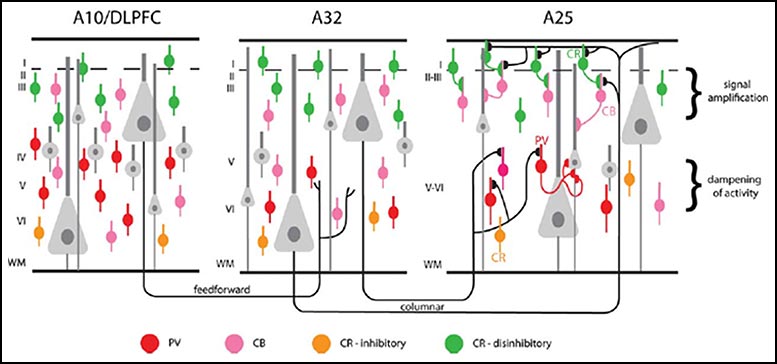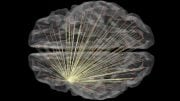
The brain’s “area 32” in the anterior cingulate cortex balances emotion and reason, maintaining emotional equilibrium by facilitating communication between cognitive and emotional brain regions.
“Area 32” balances activity from cognitive and emotional brain areas in primates.
Navigating through life requires balancing emotion and reason, a feat accomplished by the brain region “area 32” of the anterior cingulate cortex. The area maintains emotional equilibrium by relaying information between cognitive and emotional brain regions, according to new research in monkeys published in JNeurosci.
Emotional balance goes haywire in mood disorders like depression, leading to unchecked negative emotions and an inability to break out of rumination. In fact, people with depression often have an overactive area 25, a region involved in emotional expression. Healthy emotional regulation requires communication between cognitive regions, like the dorsolateral prefrontal cortex (DLPFC), and emotion regions, like area 25, also known as the subgenual cortex. But because these two areas are weakly connected, there must be a middleman involved.

Superficial layer neurons from the DLPFC send feedforward projections to the deep layers of A32. A32 sends projections to A25 originating in superficial and deep layers of A32. By predominantly targeting disinhibitory neurons in the superficial layers, pathways from A32 to the superficial layers of A25 may allow excitatory signals to propagate through the local circuitry. By predominantly targeting PV neurons in the deep layers, A32 engages a stronger inhibitory system and likely has a stronger ability to dampen activity in the local circuitry. Credit: Joyce et al., JNeurosci 2020
Joyce et al. used bidirectional neuron tracers to visualize the connections between the DLPFC, area 25, and area 32, a potential middleman, in rhesus monkeys. The DLPFC connects to the deepest layers of area 32, where the strongest inhibitory neurons reside. Area 32 connects to every layer of area 25, positioning it as a powerful regulator of area 25 activity. In healthy brains, the DLPFC signals to area 32 to balance area 25 activity, allowing emotional equilibrium. But in depression, silence from the DLPFC results in too much area 25 activity and out-of-control emotional processing.
Reference: “Serial Prefrontal Pathways Are Positioned To Balance Cognition and Emotion in Primates” by Mary Kate P. Joyce, Miguel Ángel García-Cabezas, Yohan J. John and Helen Barbas, 28 September 2020, Journal of Neuroscience.
DOI: 10.1523/JNEUROSCI.0860-20.2020









Area 32 is looking very well organized… 🙂